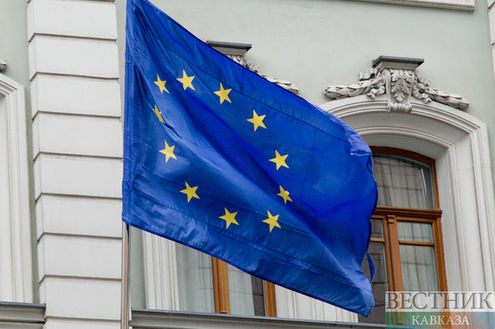The EU countries appear to be helpless in front of the infinite and growing flow of refugees from the Middle East and North African countries. Forecasts about the number of refugees in the country by the Interior Ministry of Germany, which have got into the media, are shocking: the expected number is 650-750 thousand people. Earlier this year the Ministry expected only 300 thousand refugees; since that time the forecast has been reconsidered many times. The German government finds it more and more difficult to explain to their citizens how it is going to solve the problem in this context. Moreover, the solution depends not only on the government, but also on neighboring countries through which refugees easily arrive in Germany.
Chancellor Angela Merkel told the ZDF TV-channel that the current situation was “very unsatisfactory.” “The problem of refugees may become another big all-European project which will show whether we are able to act together,” Merkel said. In other words, Germany doesn’t want to carry this heavy burden of the migrant problem alone. UN High Commissioner for Refugees António Guterres has the same view: "Responsibility should be shared between a larger number of European countries. In the long-term perspective, it is unacceptable that the two European countries with the most effective structures for working with refugees – Germany and Sweden – carry the whole burden.”
Statements about pan-European solidarity, which are being voiced at meetings of the EU politicians, don’t match the reality in fact. Migrants from Libya, Iraq, Syria, Afghanistan, and other crisis countries reach the periphery of the EU by sea. Recently the Italian island of Lampeduza and the Greek island of Kos used to be paradises for tourists. Today they have turned into a staging point for thousands of refugees. From there, they try to reach richer and more developed countries of the EU; Germany and Sweden are the most desirable among them. To fill a form for getting asylum in Germany, a refugee should be on the territory of Germany, according to the local migration laws. To reach German land, he or she must cross Italy and Austria. That’s where the internal European problems start.
Normally, the problem of a particular refugee should be solved by the country through which he or she enters the EU. However, Greece and Italy, which have poor economic indices, high unemployment rates and tourism as the most significant source of revenues, don’t want them to settle in their resorts and feed thousands or even millions of new refugees. And the problem is not about finances only. Even if Brussels provides generous financial support to the countries, it won’t solve the problem of social tension and inevitable conflicts with the local population. Finally, in the long-term perspective none of the European countries wants the appearance of Arab enclaves on their territories with a demographically active population.
Understanding these threats, near-border European countries allow refugees to move to the center of the continent. The route from Italy to Germany lies through Austria, where the police have to arrest refugees and return them to Italy. However, this doesn’t happen either, as it is not easy to prove that a particular refugee has come to Austria from Italy: near-border countries don’t register refugees intentionally – if they don’t exist on paper, Italy is not obliged to receive them back. So there is a serious risk that the refugee stays on the territory of Austria for further investigation, which can last years.
Austria is dissatisfied with such an approach; and they refer to the Shengen rules which forbid a permanent border control and don’t check passengers of trains, among whom there are many refugees, letting them go to Germany. In Germany, refugees massively fill forms for issuing asylum. According to Frankfurter Allgemeine Zeitung, every day 900 refugees come from Austria to Germany by train alone. Seven months are spent on consideration of each application in Germany; and a migrant cannot be deported from the country during this period. Considering the growing load on the Migration Ministry due to the growth of the number of applications, the long term becomes even longer. Finally, many people will have to stay in the country anyway, as in their native countries, terrorists of ISIS are acting or various countries are bombing territories of their states; and people’s lives are seriously threatened.
There are suggestions for a settlement of the crisis. For example, there is the establishing of centers for refugees on territories of more stable Middle East countries with European money. The Development Minister of Germany, Herd Muller, suggests allocating about 10 billion euros for this. However, there is no clear developed plan on the political agenda of the EU. Meanwhile, Angela Merkel has already stated that in the very near future the problem of refugees will be more urgent than that of Greece for Europe.






